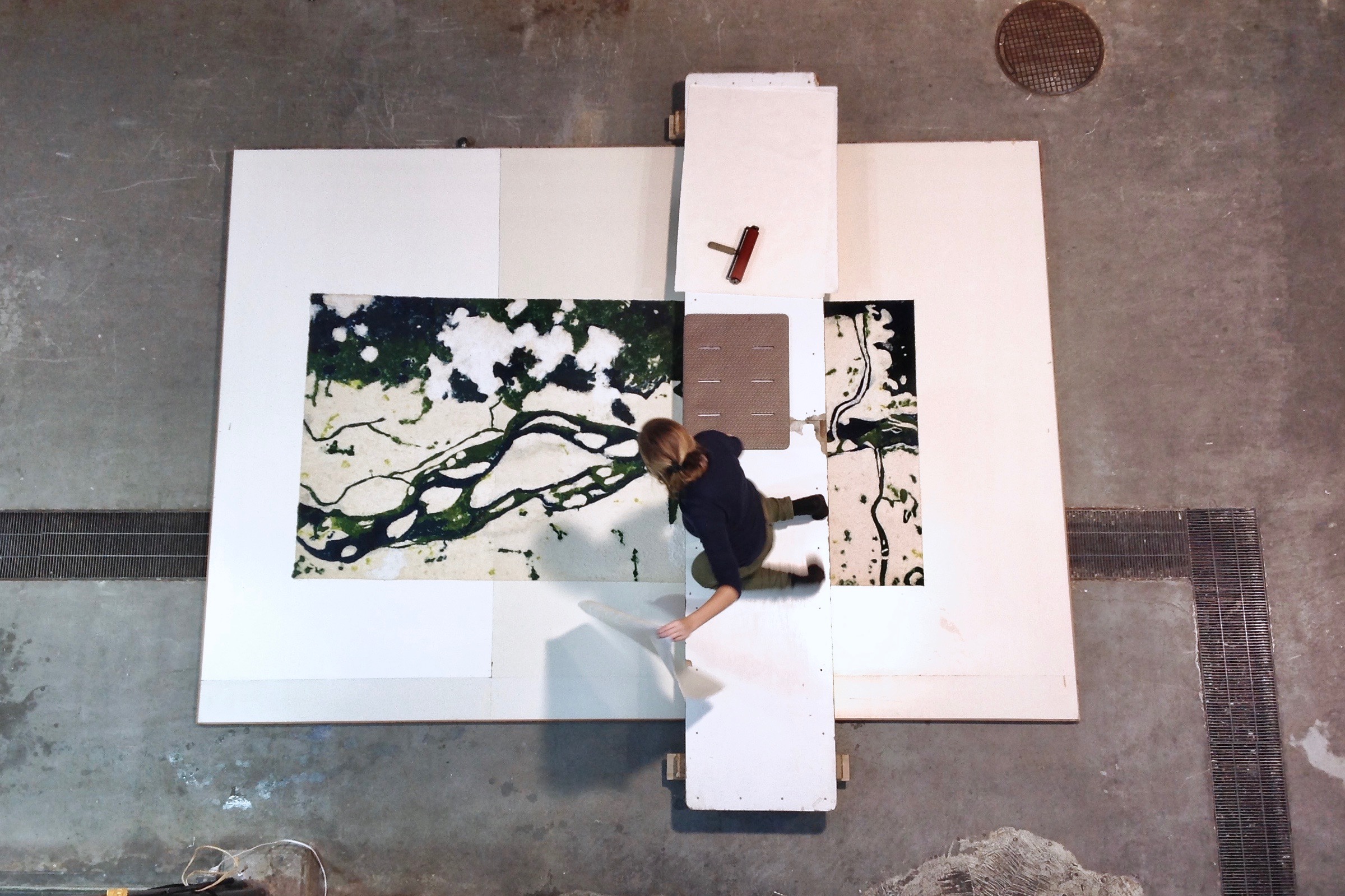Awagami Factory, Yoshinogawa, Japan (2.5 months)
There is no greater joy than being fully immersed in a creative project, especially one that is larger than myself. Working large requires the entire body. By use of balance and broad strokes, it traces presence and motion. Creating becomes a dance, challenging strength and endurance.
I get lost in the work, to my own delight. This “flow state” transcends time and space. I am everywhere and nowhere at the same time, guided by a force that is not conscious but intuitive. Pulp painting comes naturally to me, though this is my first time working in this media. I trust myself and my choices as I work.

The factory is wet with sounds of running water in all directions. Sifting, pouring, spraying and rinsing, makes paper possible. Working alongside Awagmi employees, I witness their fluid creative process as well. Every day, they arrive attentive and concentrated, making piles of handmade paper perfectly leveled and dried. We are all absorbed in our work from the hour the factory opens, until close.
After completing my first pulp painting we place it on the large, custom vacuum table to suck water from pulp. Laid flat carefully and aligned, it moves through the vacuum at steady intervals as the paper shrinks slightly.
“Happiness is absorption.”
— TE Lawrence
The paper is lifted onto a newly cleaned board for drying. We remove the screen so pulp is directly on board. With a roller in hand and dry sheets of kozo paper, I roll the remaining dampness from its surface. This presses all layers of the pulp painting together, forming one unified image. Once flattened the edges are glued and it is ready to dry for two days. When it is bone dry it is peeled from the board — first pulp painting complete!

